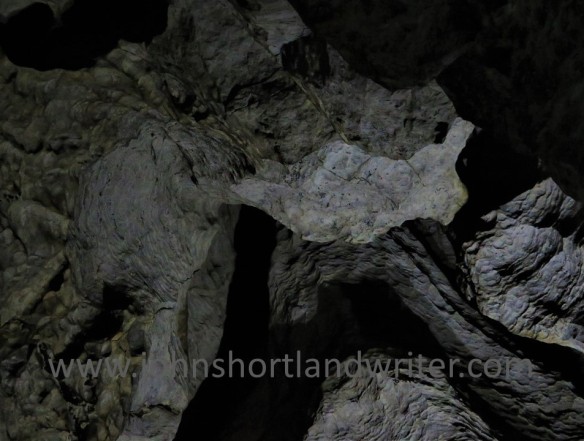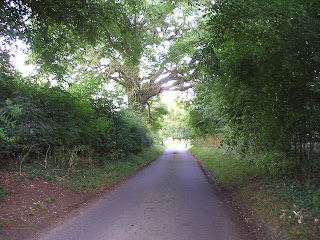Finding Blue John
Recently I spent a long weekend in the Peak District – not really long enough to explore properly despite it being Britain’s smallest national park. However, there was time to explore the small town of Bakewell, home of the famous and very tasty Bakewell Tart as well as a drive through the Chatsworth Estate. The ancestral home of the Dukes of Devonshire had to be ignored on this occasion but lunch at their farm shop was well worth breaking the journey for. For photographs and a description of these places see my earlier post by clicking on the link The Peak District’s Soft Centre. Finally reaching the area known as the High Peak (despite the name there are no mountains in the Peak District) a roadside sign pointing in the direction of Blue John led through glorious countryside.

Chatsworth House

View from the Blue John mine
Blue John is a fluorite semi-precious mineral that in its raw state appears quite dull. After drying, preparing and polishing it takes on a number of colours ranging from purplish-blue through to yellow. Despite numerous tests and analyses the origins of the colour has not been discovered. Blue John is also a rare stone for although similar minerals have been found elsewhere in the world there are only two known places where its unique quality can be found – and those are both in the same hillside in the Peak District.

Blue John in its raw state

Blue John after processing – the bowl is in the Castleton (Peak District) Visitor Centre. Copyright: Pasicles via Wikipedia
Visiting the Blue John mine is not for the faint-hearted or the short-of-breath for that matter: there are two hundred and fifty steps to descend and then, of course, you have to climb back up them to reach the surface once more. Don’t complain, ‘though, or you may have to descend by rope as the early miners once did. Fortunately, I only looked down it to see the visitors below.

The descent into the mine

The alternative way into the mine – being lowered by rope!
Inside the mine there are low tunnels to pass through contrasting with vast caverns with roof heights of 200 feet or more, either created by ancient rivers or by the miners themselves. Each cavern has its own unique characteristic although it is difficult to catch it on camera. The one below is named Lord Mulgrave’s Dining Room, a huge circular space formed by a whirlpool and so named after the dinner Lord M gave his miners there. The thought of the cooks and food being lowered deep into the mine gives a new angle to the term ‘outdoor catering’!


Lord Mulgrave’s Dining Room
The Waterfall Cavern is colourful with the stalactite formations along one side appearing to be frozen water. Elsewhere there are numerous fossils where marine animals have been ‘captured’ for posterity.

‘The Frozen Waterfall’

Fossils embedded into the mine walls
Throughout the mine the colours and texture of the rock formations are extraordinary and constantly changing. In one cavern it is easy to ‘see’ the rocky and meandering bed of the prehistoric river that formed it, the difference being that it is way, way above one’s head. In another, a giant, triangular rock has fallen to balance on its point.

The overhead ‘riverbed’

Huge and precariously balanced
The tours, which are led by miners, for Blue John is still mined here during the winter months, last about an hour. At the end of the tour all there is left is to climb the two hundred and fifty steps back to the surface…

The long climb back to the surface
For further details of the history of the Blue John Mine and visiting hours visit their website here.
To give overseas visitors a better idea of its location, the Peak District National Park is approx. 3.5 hours by car, north from London; by public transport allow 6-7 hours. There are plenty of hotels, traditional pubs and self-catering cottages available for overnight stays.


Comments
Post a Comment